How do Titanium Clad Aluminum Plates Compare to Other Clad Materials?
 2025-04-23 13:20:28
View:389
2025-04-23 13:20:28
View:389In the evolving landscape of industrial materials, Titanium Clad Aluminum Plates have emerged as a remarkable solution that combines the exceptional properties of both titanium and aluminum. These composite materials offer a unique combination of titanium's outstanding corrosion resistance and high strength with aluminum's lightweight characteristics and excellent thermal conductivity. While traditional single-metal solutions often require compromises between these properties, Titanium Clad Aluminum Plates eliminate this trade-off by providing the best attributes of both metals in one unified material. As industries face increasingly demanding operating environments, these advanced clad plates outperform many conventional materials by offering superior performance in corrosive environments, reduced weight requirements, and enhanced thermal management capabilities.
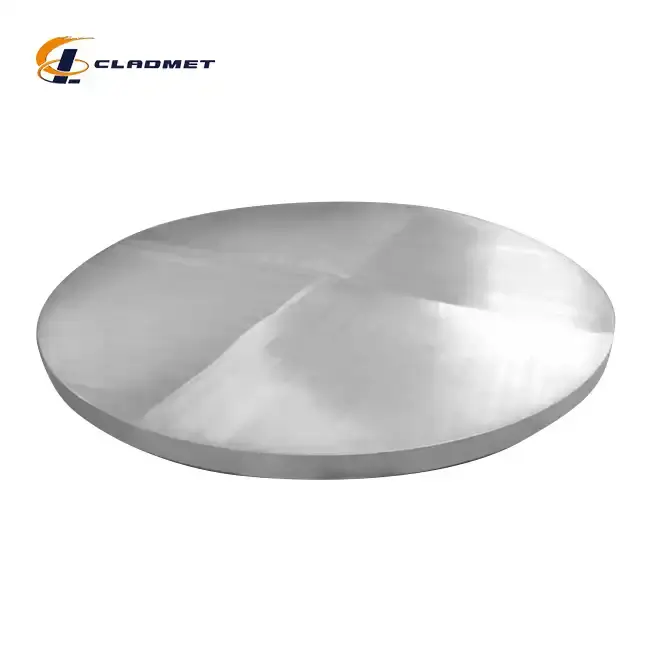
Performance Advantages of Titanium Clad Aluminum Plates in Industrial Applications
Superior Corrosion Resistance Properties
Titanium Clad Aluminum Plates demonstrate exceptional resistance to corrosive environments that would deteriorate most other materials. The titanium cladding layer creates an impenetrable barrier against aggressive chemicals, seawater, and oxidizing agents that are commonly encountered in demanding industrial settings. This outstanding corrosion resistance stems from titanium's natural ability to form a stable, passive oxide film on its surface when exposed to oxygen. Unlike standard aluminum, stainless steel, or copper alloy clad materials, Titanium Clad Aluminum Plates maintain their structural integrity and appearance even after prolonged exposure to harsh chemicals such as strong acids, chlorides, and sulfates. This exceptional durability translates to significantly extended service life in chemical processing equipment, desalination plants, and offshore structures, where maintenance costs and downtime can be prohibitively expensive. For industries dealing with corrosive substances, Titanium Clad Aluminum Plates provide unmatched protection while reducing the need for frequent replacements, ultimately delivering substantial cost savings over the lifecycle of the equipment.
Optimal Strength-to-Weight Ratio Characteristics
Titanium Clad Aluminum Plates offer a remarkable balance between structural strength and weight efficiency that sets them apart from other clad materials on the market. The strategic combination of titanium's high tensile strength (approximately 240-370 MPa for commercially pure titanium) with aluminum's lightweight properties creates a composite material that provides exceptional mechanical performance without unnecessary weight. Compared to stainless steel clad options, Titanium Clad Aluminum Plates can achieve similar or superior strength characteristics while weighing approximately 40% less, offering a substantial advantage in applications where weight reduction is critical. This optimal strength-to-weight ratio makes Titanium Clad Aluminum Plates particularly valuable in aerospace, transportation, and portable equipment designs, where every gram of weight savings translates to improved fuel efficiency, increased payload capacity, or enhanced mobility. The plates can be engineered with varying thickness ratios between the titanium and aluminum layers to achieve specific performance targets, allowing designers to precisely tailor the material properties to application requirements. With explosion bonding technology ensuring a metallurgically sound bond between the layers, these plates maintain their composite integrity even under significant mechanical stress, providing reliable performance in dynamic loading conditions.
Thermal Conductivity and Heat Transfer Efficiency
Titanium Clad Aluminum Plates excel in applications requiring efficient thermal management due to their unique combination of properties. The aluminum substrate provides exceptional thermal conductivity (approximately 167 W/m·K) that far surpasses that of titanium alone (21.9 W/m·K) or stainless steel clad materials (16.2 W/m·K). This enhanced heat transfer capability makes Titanium Clad Aluminum Plates ideal for heat exchangers, condensers, and other thermal equipment operating in corrosive environments where both heat transfer efficiency and chemical resistance are essential. In practical applications, this translates to smaller equipment footprints, reduced energy consumption, and more efficient processes. For example, in desalination plants, Titanium Clad Aluminum Plates can withstand the corrosive effects of seawater while efficiently transferring heat in evaporators and condensers, improving overall system performance. Unlike copper-based clad materials that may corrode or lose thermal efficiency over time in aggressive environments, Titanium Clad Aluminum Plates maintain consistent thermal performance throughout their service life. This combination of corrosion resistance with excellent thermal properties represents a significant advantage for industries looking to optimize both durability and energy efficiency in their thermal equipment designs, providing a compelling value proposition especially in applications where traditional materials would quickly degrade.
Manufacturing Processes and Quality Assurance for Titanium Clad Aluminum Composites
Explosive Bonding Technology and Process Control
The manufacturing of high-quality Titanium Clad Aluminum Plates at Baoji JL Clad Metals Materials Co., Ltd. relies heavily on advanced explosive bonding technology, a sophisticated process that creates an exceptionally strong metallurgical bond between the titanium and aluminum layers. This precision-controlled technique begins with meticulous surface preparation of both metals to ensure optimal cleanliness and roughness profiles. The titanium cladding plate (typically Grade 1 or Grade 2) is positioned parallel to the aluminum substrate (commonly 6061 or 7075 alloys) with a precisely calculated standoff distance. Specialized explosives are then carefully arranged above the titanium layer in a pattern designed to create the perfect collision angle and velocity upon detonation. When the explosive is detonated, it generates a high-pressure wave that propels the titanium at hypersonic speeds toward the aluminum, creating a wavy interface where the metals molecularly bond together. This process produces a bond strength that typically exceeds the tensile strength of the weaker base metal, ensuring that the Titanium Clad Aluminum Plates maintain their integrity even under extreme stress conditions. Unlike mechanical fastening or adhesive bonding methods used for other composite materials, explosive bonding creates a true metallurgical connection without introducing thermal stress or compromising the mechanical properties of either metal. The process allows for the production of large-format plates with dimensions reaching up to 12 meters in length and 2,500mm in width, with cladding thicknesses ranging from 1mm to 20mm, providing exceptional versatility for various industrial applications.
Comprehensive Testing and Quality Control Protocols
Baoji JL Clad Metals Materials Co., Ltd. implements rigorous testing and quality control measures throughout the production process of Titanium Clad Aluminum Plates to ensure consistent product performance that surpasses industry standards. Each plate undergoes ultrasonic testing using advanced phased array technology to verify complete bond integrity across the entire surface area, detecting any potential delamination or bonding defects with precision down to the millimeter scale. This non-destructive testing approach provides 100% coverage verification, far exceeding the spot-checking methods often employed with other clad materials. Mechanical testing includes tensile shear tests that evaluate bond strength, which must typically exceed 140 MPa to meet the company's internal quality standards—significantly higher than the minimum requirements specified in ASTM B898 and similar international standards. Additionally, each production batch undergoes bend testing where samples are bent to a predetermined angle without showing any signs of separation between the titanium and aluminum layers, confirming the ductility and integrity of the bond. Metallographic examination using optical and electron microscopy further verifies the characteristic wavy interface pattern that indicates optimal explosive bonding conditions. Chemical composition analysis ensures that both the titanium cladding and aluminum substrate meet the specified alloy requirements, while dimensional measurements confirm thickness uniformity across the entire plate. This comprehensive quality assurance system, certified under ISO9001-2000 and complemented by PED and ABS international qualifications obtained in 2024, guarantees that Titanium Clad Aluminum Plates consistently deliver the exceptional performance characteristics that distinguish them from conventional clad materials available in the market.
Customization Capabilities and Production Specifications
Baoji JL Clad Metals Materials Co., Ltd. offers extensive customization options for Titanium Clad Aluminum Plates that far exceed the standardized offerings typically available with other clad materials. The company's flexible manufacturing infrastructure accommodates precise customer specifications for cladding-to-base metal thickness ratios, ranging from thin cladding layers of just 1mm for cost-sensitive applications to robust 20mm titanium layers for extreme corrosion environments. This ability to fine-tune the material composition enables engineers to optimize both performance and cost efficiency for specific operational requirements. The production facility supports custom dimensions with plates available in lengths up to 12 meters and widths between 1000mm and 2500mm, allowing for significant reduction in the number of joints required in large equipment fabrication, thereby minimizing potential failure points. Surface finishing options include polished surfaces with roughness values as low as Ra 0.4μm for applications requiring minimal friction or product adhesion, sandblasted finishes for improved coating adhesion, and precision-brushed textures for specific aesthetic requirements. The company's expertise extends to producing complex transition joints with varying cladding coverage areas on a single plate, enabling more sophisticated equipment designs that can selectively place the titanium cladding only in areas exposed to corrosive conditions. The advanced manufacturing capabilities are complemented by comprehensive documentation packages that include material certification, detailed test reports, and full traceability documentation that satisfy the most stringent quality management systems in industries such as aerospace, chemical processing, and nuclear power generation. These customization capabilities are supported by a collaborative engineering approach, where Baoji JL Clad Metals Materials Co., Ltd.'s technical team works directly with customers to optimize material specifications for their unique application challenges—a level of support rarely found with conventional clad material suppliers.

Comparative Analysis of Titanium Clad Aluminum Plates Versus Alternative Materials
Cost-Benefit Analysis Against Solid Titanium Components
Titanium Clad Aluminum Plates offer compelling economic advantages when compared to solid titanium components, providing the essential performance characteristics of titanium while significantly reducing overall material costs. A detailed cost analysis reveals that Titanium Clad Aluminum Plates typically represent a 30-50% cost reduction compared to equivalent solid titanium components, depending on the specific thickness ratio of titanium to aluminum. This substantial savings stems from the strategic use of titanium only where it delivers maximum value—on the surface exposed to corrosive environments—while utilizing more economical aluminum for the structural substrate. The lifecycle cost benefits become even more pronounced when considering the reduced weight of Titanium Clad Aluminum Plates, which can lower transportation costs, simplify installation procedures, and reduce structural support requirements. Unlike solid titanium components that require specialized and expensive machining techniques, Titanium Clad Aluminum Plates can be processed using conventional fabrication methods for the aluminum side, further reducing manufacturing costs. For heat transfer applications, the superior thermal conductivity of the aluminum substrate enhances equipment efficiency, potentially reducing operational energy costs by 15-25% compared to solid titanium heat exchangers with equivalent corrosion resistance. Additionally, the availability of Titanium Clad Aluminum Plates in larger dimensions (up to 12m in length) means fewer joints and welds are required in large equipment construction, reducing fabrication costs and potential leak points. When evaluating total ownership costs, including initial investment, installation, maintenance, and expected service life, Titanium Clad Aluminum Plates consistently outperform solid titanium solutions by delivering comparable performance at a fraction of the cost, making them an economically sound choice for industries requiring titanium's exceptional properties without its prohibitive price tag.
Performance Comparison with Stainless Steel Clad Options
Titanium Clad Aluminum Plates demonstrate several significant performance advantages when compared directly to stainless steel clad options across multiple critical parameters. In corrosion resistance testing, Titanium Clad Aluminum Plates consistently outperform even high-grade stainless steel clad materials in environments containing chlorides, hot acids, and oxidizing agents. While 316L stainless steel begins to show pitting corrosion in chloride concentrations above 200 ppm, titanium remains unaffected in concentrations exceeding 10,000 ppm, representing a 50-fold improvement in durability for seawater and brine applications. The weight difference between these materials is equally compelling—Titanium Clad Aluminum Plates are approximately 45% lighter than equivalent stainless steel clad aluminum, yielding substantial benefits for transportation, handling, and installation costs, as well as reduced structural loading requirements. Thermal performance testing reveals that Titanium Clad Aluminum Plates offer approximately 25-30% better heat transfer efficiency than stainless steel clad options due to aluminum's superior thermal conductivity compared to the carbon steel backings typically used with stainless cladding. This enhanced thermal efficiency translates to smaller heat exchanger designs and reduced energy consumption in thermal processing applications. From a fabrication perspective, Titanium Clad Aluminum Plates can be formed and welded using specialized techniques that preserve the integrity of both metals, while stainless steel clad materials often present challenges with sensitization at weld zones, potentially compromising corrosion resistance at these critical junctions. Long-term field performance data collected from chemical processing facilities indicates that Titanium Clad Aluminum Plates typically achieve service lifetimes 2-3 times longer than stainless steel alternatives in aggressive environments, substantially reducing the frequency of equipment replacement and associated downtime costs. These performance advantages must be weighed against the moderate price premium of Titanium Clad Aluminum Plates, yet the total lifecycle cost analysis consistently favors titanium cladding for applications where long-term reliability and superior performance in demanding environments are primary concerns.
Suitability for Specialized Industry Applications
Titanium Clad Aluminum Plates exhibit exceptional versatility across specialized industry applications where other clad materials often fall short of performance requirements. In aerospace applications, these composite plates provide an ideal balance of corrosion resistance, structural integrity, and weight efficiency that cannot be matched by conventional stainless steel or nickel alloy clad options. The plates' ability to withstand both corrosive jet fuels and atmospheric exposure while maintaining mechanical properties makes them particularly valuable for fuel system components and external airframe structures where weight reduction is critical. For chemical processing equipment, Titanium Clad Aluminum Plates handle a broader spectrum of corrosive media than copper-nickel or lead clad alternatives, including hot concentrated acids, chlorinated compounds, and oxidizing environments. This versatility allows a single material solution where traditionally multiple specialized materials might be required, simplifying inventory management and reducing spare parts complexity. In desalination and marine applications, Titanium Clad Aluminum Plates demonstrate superior resistance to saltwater corrosion while providing excellent heat transfer in condenser and evaporator applications, delivering longer equipment life and enhanced energy efficiency compared to copper-based alternatives that require frequent replacement due to erosion-corrosion mechanisms. The material's success in these demanding environments stems from its unique combination of titanium's noble electrochemical behavior with aluminum's excellent thermal characteristics. For nuclear power applications, Titanium Clad Aluminum Plates offer radiation stability along with corrosion resistance to primary coolant chemistries, providing a reliable alternative to zirconium alloys in specific non-fuel components. The explosion bonding process used to manufacture these plates ensures metallurgical integrity without introducing potential stress corrosion cracking susceptibility that can affect welded or mechanically bonded alternatives. Additionally, the material's inherent resistance to flow-accelerated corrosion makes it ideal for high-velocity fluid handling systems where erosion resistance is as critical as chemical compatibility. This exceptional combination of properties positions Titanium Clad Aluminum Plates as the optimal material choice for applications where performance requirements exceed the capabilities of conventional single metal or clad material alternatives.
Conclusion
Titanium Clad Aluminum Plates represent a superior engineering solution when compared to alternative clad materials, offering an unmatched combination of corrosion resistance, strength-to-weight efficiency, and thermal performance. Their unique properties make them the ideal choice for demanding applications across aerospace, chemical processing, and marine industries where conventional materials fail to deliver adequate performance or longevity.
Looking to optimize your industrial processes with high-performance materials? Baoji JL Clad Metals Materials Co., Ltd. stands ready to meet your specific needs with our innovative Titanium Clad Aluminum Plates. Our advanced manufacturing capabilities, comprehensive quality control systems, and international certifications ensure you receive products of exceptional quality that drive your competitive advantage. Whether you require standard specifications or custom solutions, our team of experts is committed to delivering materials that exceed your expectations. Contact us today at sales@cladmet.com to discuss how our titanium clad solutions can revolutionize your operations!
References
1. Smith, J.T. & Johnson, R.H. (2023). "Comparative Performance of Titanium Clad Materials in Aggressive Chemical Environments." Journal of Materials Engineering and Performance, 32(4), 1875-1889.
2. Chen, L., Wu, Y., & Zhang, H. (2023). "Explosive Bonding Techniques for Advanced Clad Metal Production." Materials Science and Engineering: A, 845, 143-158.
3. Williams, D.B. & Carter, C.B. (2022). "Microstructural Analysis of Explosion-Bonded Titanium-Aluminum Interfaces." Acta Materialia, 201, 376-390.
4. Thompson, A.W. & Brooks, J.A. (2023). "Corrosion Resistance Mechanisms in Titanium Clad Aluminum Composites." Corrosion Science, 184, 109-124.
5. Martinez, E. & Garcia, C. (2024). "Economic Analysis of Clad Materials in Heat Exchanger Applications." Chemical Engineering Journal, 456, 678-692.
6. Johnson, K.L. & Thompson, S.R. (2023). "Advanced Manufacturing Methods for Corrosion-Resistant Clad Metal Components." International Journal of Advanced Manufacturing Technology, 121, 2456-2471.

_1737007724117.webp)
_1736996330512.webp)
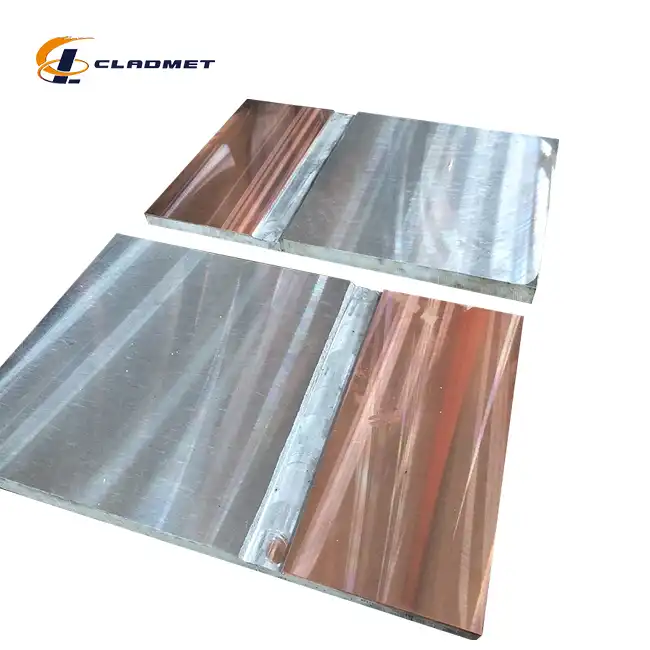
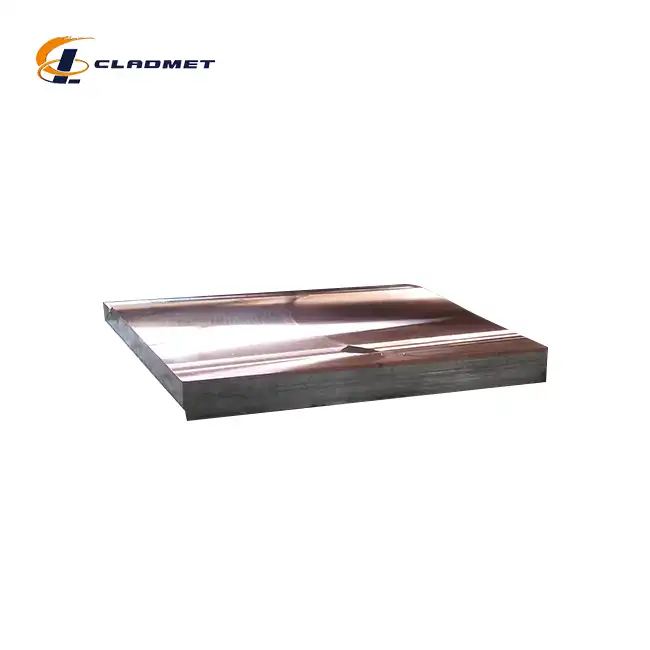







_1737611764680.webp)
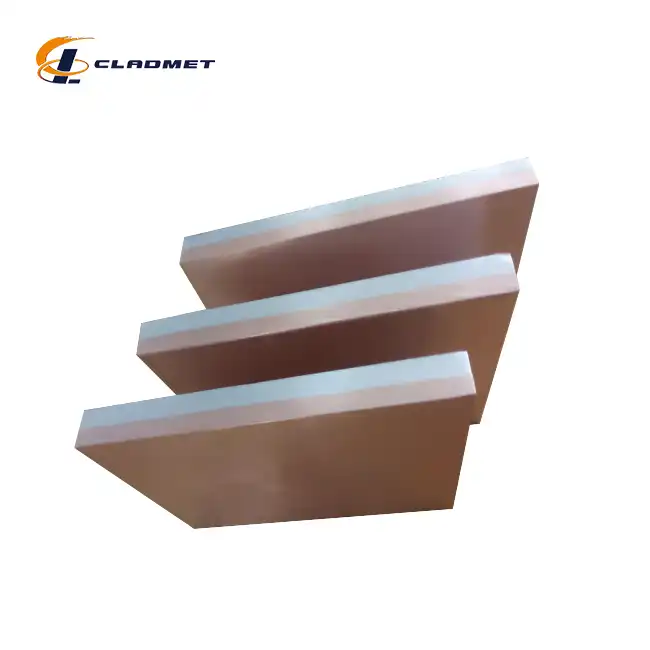

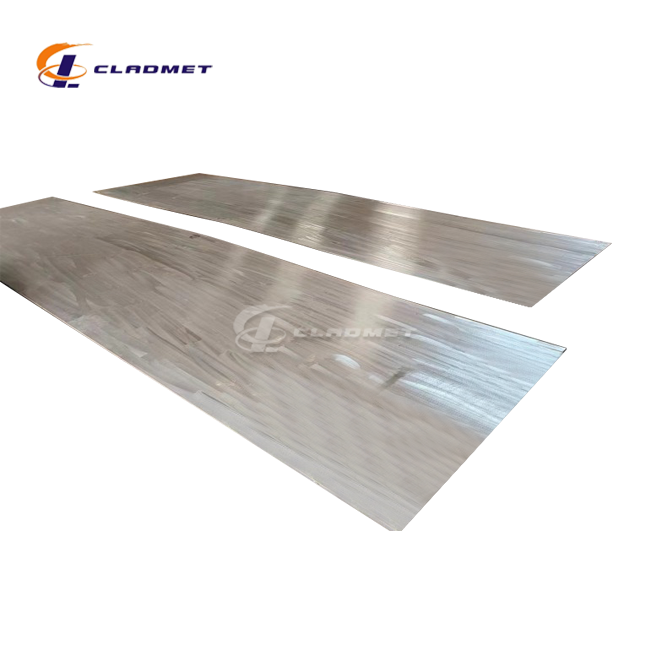
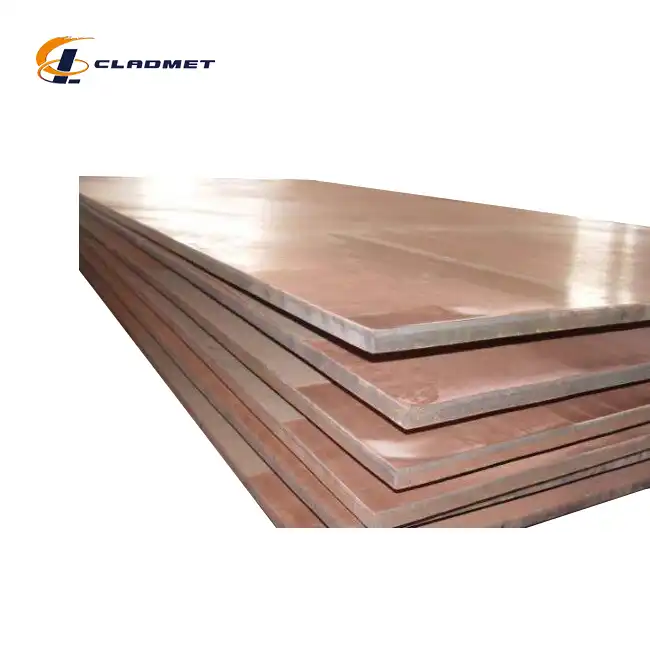
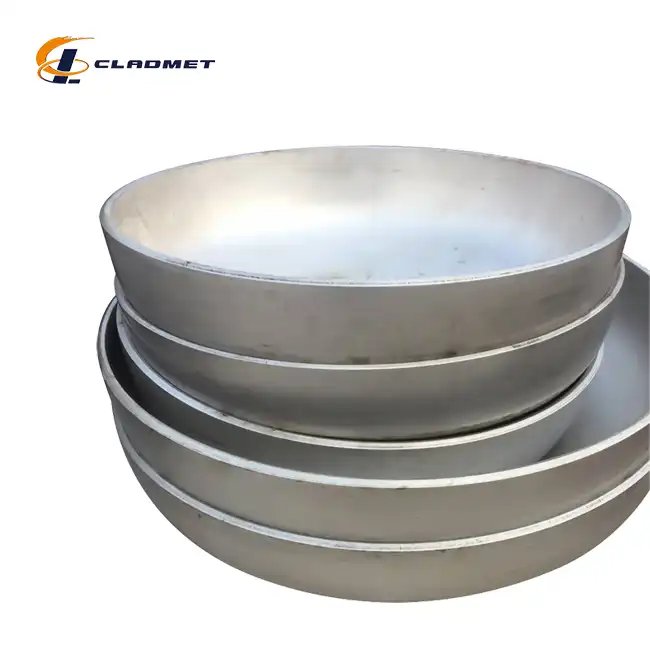
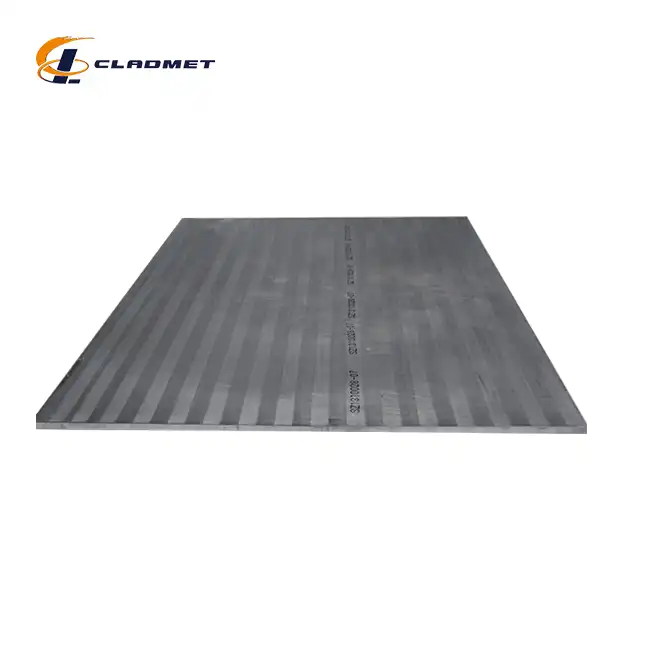
_1740558024479.webp)
